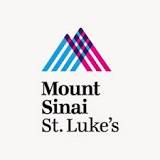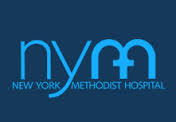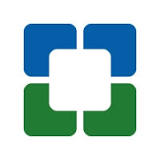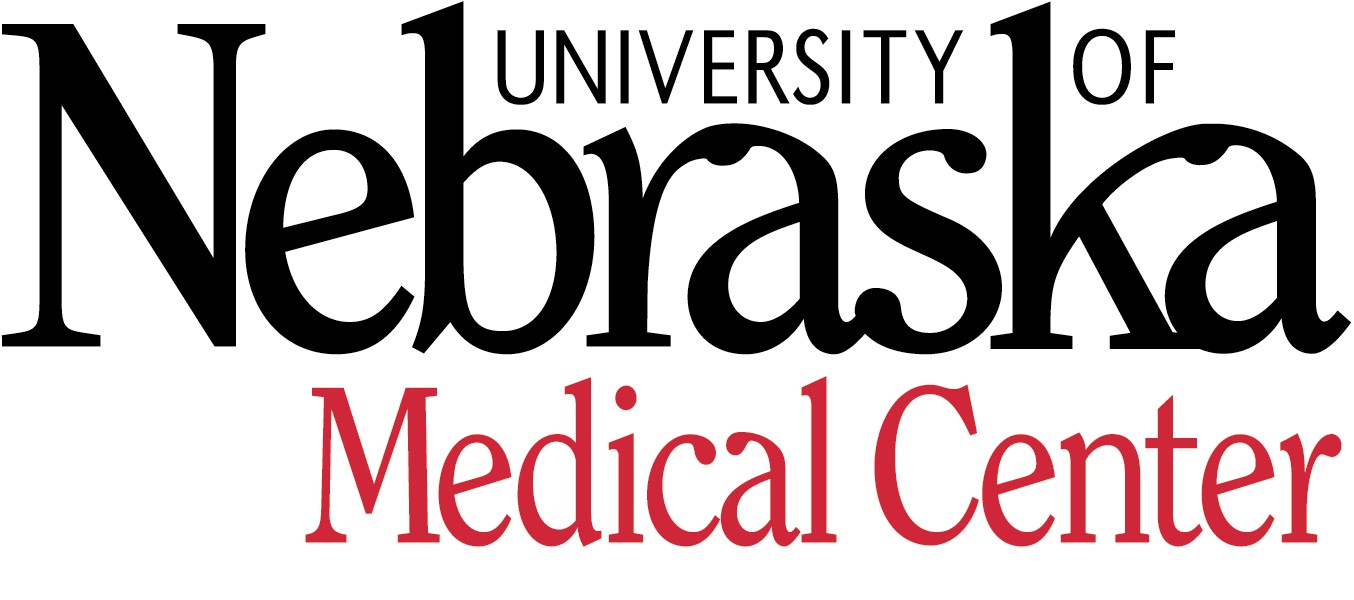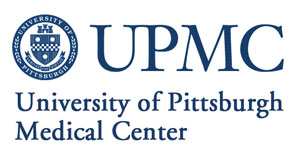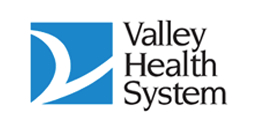DEfibrillators To REduce Risk by MagnetIc ResoNance Imaging Evaluation
| Status: | Terminated |
|---|---|
| Conditions: | Peripheral Vascular Disease, Cardiology |
| Therapuetic Areas: | Cardiology / Vascular Diseases |
| Healthy: | No |
| Age Range: | 18 - Any |
| Updated: | 2/7/2019 |
| Start Date: | June 2007 |
| End Date: | April 2011 |
This trial is a prospective, multi-center, randomized study of patients with coronary artery
disease (CAD) and mild to moderate left ventricular (LV) dysfunction. The primary objective
of this study is to test the hypothesis that Implantable Cardioverter Defibrillator (ICD)
therapy in combination with medical therapy in patients with an infarct size greater than or
equal to 10% of the left ventricular mass improves long term survival compared to medical
therapy alone. In addition to the 2-arm randomized trial, the study will also include a
non-investigational registry of non-randomized patients.
disease (CAD) and mild to moderate left ventricular (LV) dysfunction. The primary objective
of this study is to test the hypothesis that Implantable Cardioverter Defibrillator (ICD)
therapy in combination with medical therapy in patients with an infarct size greater than or
equal to 10% of the left ventricular mass improves long term survival compared to medical
therapy alone. In addition to the 2-arm randomized trial, the study will also include a
non-investigational registry of non-randomized patients.
Detailed Description:
The utilization of ICD therapy has resulted in significant reduction in mortality among those
at highest risk of sudden cardiac death, such as survivors of cardiac arrest and patients
presenting with symptomatic sustained ventricular arrhythmias. Patients with CAD and advanced
LV dysfunction (EF <35%) also benefit from ICD. However, although at high risk, these
patients represent only a small percentage of the population who die suddenly. While there
are many tests that have been used for stratification of risk for sudden cardiac death, the
two that have documented clinical utility are determination of left ventricular ejection
fraction and presence of inducibility of ventricular tachycardia during programmed electrical
stimulation performed as part of EP testing. The utility of these tests likely result from
their ability to select patients who have the requisite substrate allowing for sustained
ventricular tachyarrhythmias. It has been shown that ventricular tachycardia occurs more
commonly in the setting of larger infarcts. Ejection fraction has been related to infarct
size; presumably, the larger the area of infarction, the lower the ejection fraction.
Electrophysiologic testing directly establishes the presence of substrate by the actual
induction of ventricular tachycardia.
A major limitation of electrophysiologic programmed stimulation is the high number of false
negative findings. Thus, a significant number of patients without inducible arrhythmias
remain at risk. CE-MRI provides functional information (EF, LV Volumes, LV mass, etc), which
is routine in the initial evaluation of post-MI patients, and in addition provides detailed
geometry of scar tissue. There is a clear association between inducible arrhythmias and scar
size which until the development of cardiac MRI, could not be seen in humans. Use of cardiac
MRI has demonstrated that although most patients with a large MI were inducible, a small but
significant number of patients, who remain at risk, were not inducible. There was also an
association between death and infarct size in patients with cardiovascular risk factors but
no established CAD.
The Center for Medicare Services (CMS) has recently decided in a coverage decision that
patients with left ventricular dysfunction, heart failure, and an ejection fraction of <35%
would be eligible to receive an ICD as long as they are enrolled in a prospective registry.
Patients with LV ejection fractions greater than 35% or those without heart failure and
ejection fractions over 30%, represent a more difficult management dilemma. However, since
the majority of out of hospital cardiac arrests occur in patients with EF >35%, managing
these patients is crucial in addressing the epidemiologic problem of sudden cardiac death.
The primary objective of this trial is to test the hypothesis that therapy with an ICD
combined with medical therapy improves long-term survival compared to medical therapy alone
in patients with CAD, infarct mass greater than or equal to 10% of the left ventricle and
left ventricular dysfunction who do not have an indication for ICD by either of the following
criteria. Patients must have an EF of >35% or have an EF of 30-35% and must not have
inducible ventricular tachycardia or have NYHA Class II or greater heart failure (Target
Population).
The secondary objective is to test the hypothesis that therapy with an ICD combined with
medical therapy improves arrhythmic survival compared to medical therapy alone in patients
with CAD, infarct mass greater than or equal to 10% and left ventricular dysfunction who do
not have an indication for ICD based on the Target Population described above.
Recruitment: All patients who have a history of coronary heart disease (CAD) with
documentation of either myocardial infarction (MI) or left ventricular dysfunction (LVD), a
preliminary ejection fraction (EF) > 35% and have previously undergone a contrast-enhanced
MRI (CE-MRI) study for clinical diagnostic reasons or as part of the study entry screening
procedure may be further evaluated for eligibility for this trial. In addition, patients with
an ejection fraction of 30-35% may be eligible for the study if they do not currently have an
indication for an ICD based on Target Population criteria described above. These patients may
have NYHA Class I heart failure, no non-sustained VT on holter monitor, or if non-sustained
VT is present, there is the absence of inducible VT at EP study.
The first 1550 patients who are found to have an EF >30% with NYHA Class I heart failure or
35% by routine clinical evaluation and who also have an MI involving greater than or equal to
10% of total left ventricular mass will be enrolled in the main randomized portion of the
trial. These patients will be randomly assigned to one of two groups: ICD therapy in
combination with medical therapy (ICD Group) or medical therapy alone (Control Group).
Follow-Up: Clinic visits are required every 6 months until the completion of the study.
Telephone contact is required every six months to assess vital status and obtain new
information regarding medical status and/or medical events. The telephone calls alternate
with the clinical visits, so that patient contact will occur every 3 months until the
completion of the study.
Non-Investigational Registry:
The primary objective of the registry sub-study is to test the hypothesis that infarct mass
as measured by contrast enhanced Cardiac MRI (CE-MRI) is a better predictor for sudden
cardiac death than LV ejection fraction. The registry will examine infarct mass as measured
by Cardiac MRI and LV ejection fraction (EF) as predictors for SCD.
The purpose of the registry is hypothesis generating and no labeling or other indications are
anticipated based on registry findings.
Participation in the Registry requires that the patient has undergone a contrast-enhanced
cardiac MRI prior to enrollment. In order to ensure consistent infarct mass assessments, the
cardiac MRI study submitted to determine eligibility for randomization must meet the
following criteria:
1. CE-cardiac MRIs must be obtained using Siemens, General Electric or Phillips equipment.
2. The contrast agent must be gadolinium-based at a dose sufficient to render images of
acceptable quality.
3. The CE-cardiac MRI must be available for electronic submission to the MRI Core
laboratory for analysis.
If techniques for infarct mass measurement or data acquisition change during the course of
the trial, the Core laboratory and the Steering Committee may choose to alter some of the
above parameters.
Once consent to participate in the registry has been obtained, the site will forward the
CE-MRI study to the CE-MRI core lab for analysis to determine placement in the appropriate
registry, baseline demographics characteristics will be collected on all registry patients.
This will aid in statistical analysis to verify the generalizability of the findings. The
differences in total survival between these groups will also be compared using the same
methodology as for the primary end-point. Patients with and without ICD implants will be
compared separately. In addition, blood specimens for genetic sampling and biomarker testing
will be obtained on all patients in the registry cohort who agree, to determine if any of SCD
substrates exist in the DETERMINE registry population.
Study subjects will be contacted by mail by the Endpoint Coordinating Center at Brigham and
Women's Hospital in Boston every 6 months to determine vital status and obtain any new
information regarding change in medical status or the occurrence of any medical events. This
will promote the continued relationship between the study participant and the enrolling
center and can also be used to remind the study subject of their next scheduled appointment.
Scope and Duration of the trial:
- Up to 100 sites to screen a total of 10,000 patients will enroll 1550 patients into the
randomized study recruited from a total of 10,000 patients contributing data and CE-MRI
images to the registries.
- Registry enrollment per site = ~90 subjects
- Randomization per site = 1-3 per month (expected randomized enrollment per site is 20
patients or more )
- Estimated enrollment period: 36 months
- 24 months of follow-up after the last patient is randomized
The utilization of ICD therapy has resulted in significant reduction in mortality among those
at highest risk of sudden cardiac death, such as survivors of cardiac arrest and patients
presenting with symptomatic sustained ventricular arrhythmias. Patients with CAD and advanced
LV dysfunction (EF <35%) also benefit from ICD. However, although at high risk, these
patients represent only a small percentage of the population who die suddenly. While there
are many tests that have been used for stratification of risk for sudden cardiac death, the
two that have documented clinical utility are determination of left ventricular ejection
fraction and presence of inducibility of ventricular tachycardia during programmed electrical
stimulation performed as part of EP testing. The utility of these tests likely result from
their ability to select patients who have the requisite substrate allowing for sustained
ventricular tachyarrhythmias. It has been shown that ventricular tachycardia occurs more
commonly in the setting of larger infarcts. Ejection fraction has been related to infarct
size; presumably, the larger the area of infarction, the lower the ejection fraction.
Electrophysiologic testing directly establishes the presence of substrate by the actual
induction of ventricular tachycardia.
A major limitation of electrophysiologic programmed stimulation is the high number of false
negative findings. Thus, a significant number of patients without inducible arrhythmias
remain at risk. CE-MRI provides functional information (EF, LV Volumes, LV mass, etc), which
is routine in the initial evaluation of post-MI patients, and in addition provides detailed
geometry of scar tissue. There is a clear association between inducible arrhythmias and scar
size which until the development of cardiac MRI, could not be seen in humans. Use of cardiac
MRI has demonstrated that although most patients with a large MI were inducible, a small but
significant number of patients, who remain at risk, were not inducible. There was also an
association between death and infarct size in patients with cardiovascular risk factors but
no established CAD.
The Center for Medicare Services (CMS) has recently decided in a coverage decision that
patients with left ventricular dysfunction, heart failure, and an ejection fraction of <35%
would be eligible to receive an ICD as long as they are enrolled in a prospective registry.
Patients with LV ejection fractions greater than 35% or those without heart failure and
ejection fractions over 30%, represent a more difficult management dilemma. However, since
the majority of out of hospital cardiac arrests occur in patients with EF >35%, managing
these patients is crucial in addressing the epidemiologic problem of sudden cardiac death.
The primary objective of this trial is to test the hypothesis that therapy with an ICD
combined with medical therapy improves long-term survival compared to medical therapy alone
in patients with CAD, infarct mass greater than or equal to 10% of the left ventricle and
left ventricular dysfunction who do not have an indication for ICD by either of the following
criteria. Patients must have an EF of >35% or have an EF of 30-35% and must not have
inducible ventricular tachycardia or have NYHA Class II or greater heart failure (Target
Population).
The secondary objective is to test the hypothesis that therapy with an ICD combined with
medical therapy improves arrhythmic survival compared to medical therapy alone in patients
with CAD, infarct mass greater than or equal to 10% and left ventricular dysfunction who do
not have an indication for ICD based on the Target Population described above.
Recruitment: All patients who have a history of coronary heart disease (CAD) with
documentation of either myocardial infarction (MI) or left ventricular dysfunction (LVD), a
preliminary ejection fraction (EF) > 35% and have previously undergone a contrast-enhanced
MRI (CE-MRI) study for clinical diagnostic reasons or as part of the study entry screening
procedure may be further evaluated for eligibility for this trial. In addition, patients with
an ejection fraction of 30-35% may be eligible for the study if they do not currently have an
indication for an ICD based on Target Population criteria described above. These patients may
have NYHA Class I heart failure, no non-sustained VT on holter monitor, or if non-sustained
VT is present, there is the absence of inducible VT at EP study.
The first 1550 patients who are found to have an EF >30% with NYHA Class I heart failure or
35% by routine clinical evaluation and who also have an MI involving greater than or equal to
10% of total left ventricular mass will be enrolled in the main randomized portion of the
trial. These patients will be randomly assigned to one of two groups: ICD therapy in
combination with medical therapy (ICD Group) or medical therapy alone (Control Group).
Follow-Up: Clinic visits are required every 6 months until the completion of the study.
Telephone contact is required every six months to assess vital status and obtain new
information regarding medical status and/or medical events. The telephone calls alternate
with the clinical visits, so that patient contact will occur every 3 months until the
completion of the study.
Non-Investigational Registry:
The primary objective of the registry sub-study is to test the hypothesis that infarct mass
as measured by contrast enhanced Cardiac MRI (CE-MRI) is a better predictor for sudden
cardiac death than LV ejection fraction. The registry will examine infarct mass as measured
by Cardiac MRI and LV ejection fraction (EF) as predictors for SCD.
The purpose of the registry is hypothesis generating and no labeling or other indications are
anticipated based on registry findings.
Participation in the Registry requires that the patient has undergone a contrast-enhanced
cardiac MRI prior to enrollment. In order to ensure consistent infarct mass assessments, the
cardiac MRI study submitted to determine eligibility for randomization must meet the
following criteria:
1. CE-cardiac MRIs must be obtained using Siemens, General Electric or Phillips equipment.
2. The contrast agent must be gadolinium-based at a dose sufficient to render images of
acceptable quality.
3. The CE-cardiac MRI must be available for electronic submission to the MRI Core
laboratory for analysis.
If techniques for infarct mass measurement or data acquisition change during the course of
the trial, the Core laboratory and the Steering Committee may choose to alter some of the
above parameters.
Once consent to participate in the registry has been obtained, the site will forward the
CE-MRI study to the CE-MRI core lab for analysis to determine placement in the appropriate
registry, baseline demographics characteristics will be collected on all registry patients.
This will aid in statistical analysis to verify the generalizability of the findings. The
differences in total survival between these groups will also be compared using the same
methodology as for the primary end-point. Patients with and without ICD implants will be
compared separately. In addition, blood specimens for genetic sampling and biomarker testing
will be obtained on all patients in the registry cohort who agree, to determine if any of SCD
substrates exist in the DETERMINE registry population.
Study subjects will be contacted by mail by the Endpoint Coordinating Center at Brigham and
Women's Hospital in Boston every 6 months to determine vital status and obtain any new
information regarding change in medical status or the occurrence of any medical events. This
will promote the continued relationship between the study participant and the enrolling
center and can also be used to remind the study subject of their next scheduled appointment.
Scope and Duration of the trial:
- Up to 100 sites to screen a total of 10,000 patients will enroll 1550 patients into the
randomized study recruited from a total of 10,000 patients contributing data and CE-MRI
images to the registries.
- Registry enrollment per site = ~90 subjects
- Randomization per site = 1-3 per month (expected randomized enrollment per site is 20
patients or more )
- Estimated enrollment period: 36 months
- 24 months of follow-up after the last patient is randomized
Inclusion Criteria:
Randomized Arm
1. Evidence of Coronary Artery Disease (CAD)a.
2. Evidence of prior Myocardial Infarction defined by either:
A. Clinical history of prior myocardial infarction OR B. Mild-moderate systolic LV
dysfunction with an EF ≤50%
3. LVEF>35% by any current standard evaluation technique (e.g., echocardiogram, MUGA,
angiography).
• Patients who have an EF between 30-35% and NYHA Class I heart failure who do not
have a history of ventricular tachyarrhythmias, or inducible ventricular tachycardia
during electrophysiological (EP) testing can be enrolled (Target Population).
4. CE-MRI measure of infarct mass > 10% of LV mass (as measured by the MRI core lab)
• If CE-MRI performed ≤ 40 days after myocardial infarction infarct mass must be ≥ 15%
of the LV mass.
5. Patients aged 18 years or above
1. CAD will be confirmed by evidence of one of the following three (3) criteria 1)
Prior myocardial infarction, 2) Significant stenosis of a major epicardial vessel
(>50% proximal or 70% distal) by coronary angiography, 3) Prior revascularization
(percutaneous coronary intervention or coronary artery bypass surgery. Patients
may not be randomized until 90 days after revascularization.
2. MI should be documented by the presence of two (2) of the following three (3)
criteria: 1) Symptoms consistent with myocardial infarction (i.e. chest pain,
shortness of breath), 2) Q-waves on electrocardiogram and 3) Elevated cardiac
enzymes (CPK elevation > two times or troponin elevation > three times the upper
limit of normal for the lab). Patients may not be randomized until 40 days after
myocardial infarction.
Exclusion Criteria
1. History of cardiac arrest or spontaneous or inducible sustained VT (15 beats or more
at a rate of 120 BPM or greater)*
2. Unexplained syncope
3. Need for revascularization based on investigator's clinical assessment within the next
12 months (patients may be reevaluated 90 days after revascularization)
4. Currently implanted permanent pacemaker and/or pacemaker/ICD lead
5. Contraindication to a ICD implant (i.e. inadequate venous access, bleeding disorder)
6. Acute or chronic severe renal insufficiency (< 30mL/min/1.73m2); acute renal
insufficiency of any severity due to hepato-renal syndrome
7. Current or planned renal or liver transplant
8. End stage renal disease on hemodialysis or peritoneal dialysis
9. Contraindication to CE-MRI or history of allergy to gadolinium-based contrast dye
10. Metal fragments in the eyes or face, implantation of any electronic devices such as
(but not limited to) cardiac pacemakers, cardiac defibrillators, cochlear implants or
nerve stimulators, surgery on the blood vessels of the brain, body piercing
11. Recent MI (<40 days) or revascularization (<90 days)
12. CVA within 90 days
13. Antiarrhythmic drug therapy for ventricular arrhythmias
14. New York Heart Association CHF functional class IV at enrollment
Non-Investigational Registry Inclusion Criteria
- Evidence of CAD a with either a history of prior myocardial infarction OR any LV
dysfunction
- Evidence of LV dysfunction (ejection fraction) as measured by any current standard
screening technique (e.g., echocardiogram, MUGA, angiography).c
- Clinical CE-MRI within the past 12 months (scheduled or completed)
- Patients aged 18 years or above
- CAD will be confirmed by evidence of one of the following three (3) criteria 1) Prior
myocardial infarction, 2) Significant stenosis of a major epicardial vessel (>50%
proximal or 70% distal) by coronary angiography, 3) Prior revascularization
(percutaneous coronary intervention or coronary artery bypass surgery.
- MI should be documented by the presence of two (2) of the following three (3)
criteria: 1) Symptoms consistent with myocardial infarction (i.e. chest pain,
shortness of breath), 2) Q-waves on electrocardiogram and 3) Elevated cardiac enzymes
(CPK elevation > two times or troponin elevation > three times the upper limit of
normal for the lab).
- Patients can be enrolled in the registry even if they have received or are about to
receive an ICD for primary prevention.
Exclusion Criteria
- History of cardiac arrest or spontaneous or inducible sustained VT (15 beats or more
at a rate of 120BPM or greater)*
- Contraindication to CE-MRI or history of allergy to gadolinium-based contrast
- Spontaneous arrhythmia that precludes assessment by cardiac MRI
- Acute or chronic severe renal insufficiency (<30mL/min/1.73m2); acute renal
insufficiency of any severity due to hepato-renal syndrome.
- Current or planned renal or liver transplant
- End stage renal disease on hemodialysis or peritoneal dialysis
- Metal fragments in the eyes or face, implantation of any electronic devices such as
(but not limited to) cardiac pacemakers, cardiac defibrillators, cochlear implants or
nerve stimulators, surgery on the blood vessels of the brain , body piercing
- Uninterpretable MRI images by core lab criteria
- Any condition other than cardiac disease that, in the investigator's judgment, would
seriously limit life expectancy (poor 6-month survival)
- Marked valvular heart disease requiring surgical intervention
- Current alcohol or drug abuse
- Participating in other trials with an active treatment arm (not to exclude patients
who are in trials of diagnostic techniques or approved therapies)
- Unwilling or unable to provide informed consent *Exception: Cardiac arrest or
spontaneous VT that occurs during the acute MI event will not be considered an
exclusion
We found this trial at
56
sites
Click here to add this to my saved trials
Emory University Emory University, recognized internationally for its outstanding liberal artscolleges, graduate and professional schools,...
Click here to add this to my saved trials
Brigham and Women's Hosp Boston’s Brigham and Women’s Hospital (BWH) is an international leader in...
Click here to add this to my saved trials
Click here to add this to my saved trials
St Luke's - Roosevelt Hospital Center With 523 beds, Mount Sinai St. Luke's serves as...
Click here to add this to my saved trials
Click here to add this to my saved trials
Click here to add this to my saved trials
University of Rochester The University of Rochester is one of the country's top-tier research universities....
Click here to add this to my saved trials
Abington Memorial Hospital Abington Memorial Hospital (AMH) is a 665-bed, regional referral center and teaching...
Click here to add this to my saved trials
Click here to add this to my saved trials
Click here to add this to my saved trials
Click here to add this to my saved trials
Johns Hopkins The Johns Hopkins University opened in 1876, with the inauguration of its first...
Click here to add this to my saved trials
Click here to add this to my saved trials
Click here to add this to my saved trials
New York Methodist Hospital A voluntary, acute-care teaching hospital, New York Methodist Hospital's mission is...
Click here to add this to my saved trials
Click here to add this to my saved trials
Click here to add this to my saved trials
University Hospitals of Cleveland The history of University Hospitals Case Medical Center is linked to...
Click here to add this to my saved trials
MetroHealth Med Ctr The MetroHealth System is one of the largest, most comprehensive health care...
Click here to add this to my saved trials
Cleveland Clinic Foundation The Cleveland Clinic (formally known as The Cleveland Clinic Foundation) is a...
Click here to add this to my saved trials
Click here to add this to my saved trials
Click here to add this to my saved trials
Click here to add this to my saved trials
Fort Wayne, Indiana 46804
Click here to add this to my saved trials
Click here to add this to my saved trials
Click here to add this to my saved trials
Greensboro, North Carolina 27401
Click here to add this to my saved trials
Click here to add this to my saved trials
Click here to add this to my saved trials
Click here to add this to my saved trials
Click here to add this to my saved trials
Click here to add this to my saved trials
Click here to add this to my saved trials
Click here to add this to my saved trials
Click here to add this to my saved trials
Click here to add this to my saved trials
UCLA Medical Center Founded in 1955, UCLA Medical Center became Ronald Reagan UCLA Medical Center...
Click here to add this to my saved trials
Click here to add this to my saved trials
Minneapolis, Minnesota 55433
Click here to add this to my saved trials
Click here to add this to my saved trials
Click here to add this to my saved trials
Click here to add this to my saved trials
Columbia University Medical Center Situated on a 20-acre campus in Northern Manhattan and accounting for...
Click here to add this to my saved trials
Click here to add this to my saved trials
Click here to add this to my saved trials
Univ of Nebraska Med Ctr A vital enterprise in the nation’s heartland, the University of...
Click here to add this to my saved trials
Click here to add this to my saved trials
University of Pittsburgh Medical Center UPMC is one of the leading nonprofit health systems in...
Click here to add this to my saved trials
The Valley Hospital The Valley Hospital is a fully accredited, acute care, not-for-profit hospital serving...
Click here to add this to my saved trials
Click here to add this to my saved trials
Click here to add this to my saved trials
Sacramento, California 95818
Click here to add this to my saved trials
University of Arizona The University of Arizona is a premier, public research university. Established in...
Click here to add this to my saved trials
Click here to add this to my saved trials
Click here to add this to my saved trials


